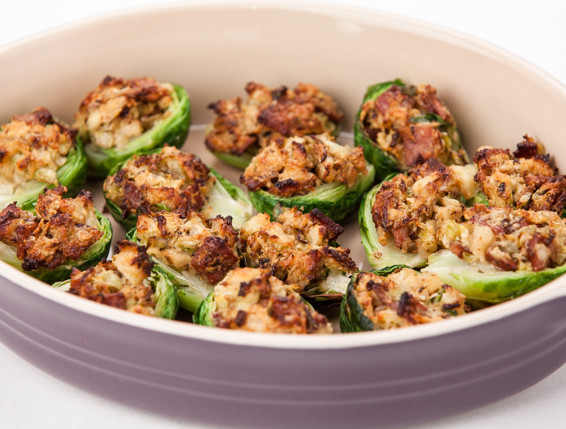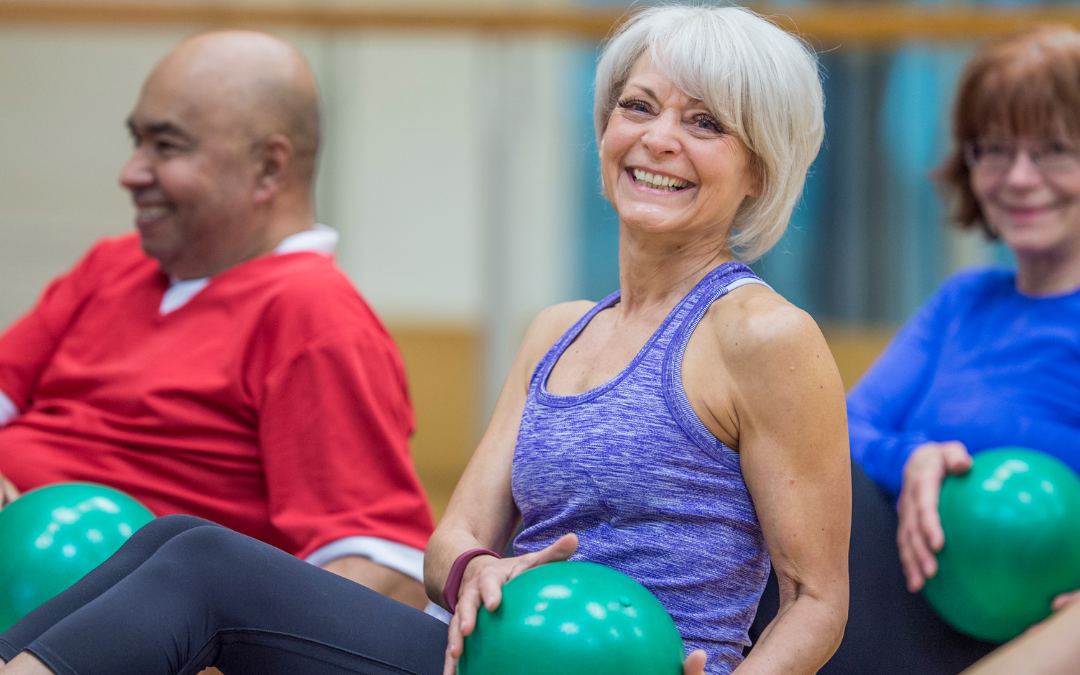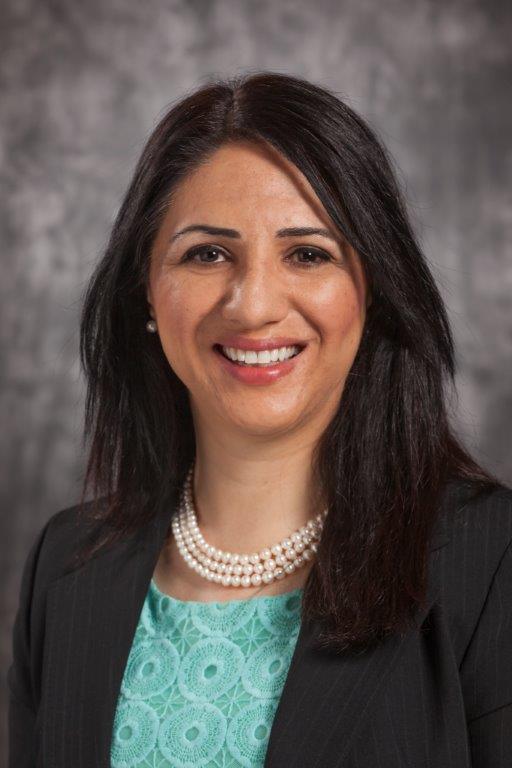
by Guest | Dec 21, 2022 | Eat Well
Between the winter weather, abundance of sweet treats, and chaos of coordinating family gatherings, it can be difficult to maintain your usual routines during the holidays. Check out some of these tips and tricks for finding the balance in enjoying holiday festivities from Lewis Martin, Nutrition Director at the Oregon Dairy and Nutrition Council, followed by a few creative “merry mocktails” for those looking to take a break from alcohol this season:
Healthy Holiday Hacks
Make Breakfast the most important meal of your day: Some people believe that by skipping out on food intake earlier in the day, they can compensate later on and load up on calories at a gathering without consequence. The truth is, this sabotaging practice can cause you to eat well beyond your daily needs in one sitting, causing spikes in blood sugar and prompting your body to store unneeded excess energy. Consuming a high protein, high fiber breakfast at the start of your day can help you better manage hunger, and give you solid control when dinner time arrives. Try options like eggs with whole wheat toast, lowfat Greek yogurt with high fiber granola, or oatmeal cooked in lowfat milk.
Brighten up your beverage choice: Soda, beer, and cocktails can sneak hundreds of calories into a meal without having any effect on how full you feel. Instead, enjoy sparkling water or a cozy hot cup of coffee/tea. If you’re hankering for something sweeter, you can even try diet or “zero” soda options, which don’t contain any calories or sugar.
Double up on veggies: If you’re hardwired to clean your plate, use your impulse to your advantage. Load up on non-starchy vegetables like roasted carrots, steamed green beans, or savory collard greens in place of stuffing, potatoes, or bread. Pair with your favorite protein choice, like turkey, and you have a seriously delicious meal.
Don’t stop moving: With great energy from calories, comes the great responsibility to use that energy! Squeeze in your fitness routine before heading over to or hosting a gathering; catch up with friends and family on a brisk walk before your meal; or start a new tradition by hosting a backyard Turkey Bowl!
Bring your own, healthier dessert: Holiday desserts are often the most calorie and sugar-dense options at gatherings, and can wreak havoc on your efforts to stay on track with your health goals. Preparing a lighter, lower sugar dessert can not only provide confidence that you’ll be sticking with ideal food choices, but will give you the chance to share something awesome with your loved ones. Head over to our Healthy Recipes page for more inspiration!
Rethink the drink: Many holiday parties have alcohol as an optional drink for adults. Did you know that more than 1 in 5 Oregonians drink excessively? Examples of excessive drinking include binge or heavy drinking. Excessive drinking is harmful to a person’s body and can increase the risk of certain cancer (breast, colon, prostate, etc.), increase the risk of heart disease, and can lead to changes in behavior or mood. To learn more about you risk, check out the Oregon Health Authority’s ‘Rethink the Drink’ campaign located at: www.rethinkthedrink.com.
The Merry Mocktail List
Take a break from alcohol or pace yourself this holiday season and try a Merry Mocktail! These drinks are a delicious substitute for alcoholic beverages. Be aware of the sugar content and look for low-sugar or sugar substitute options and fresh, natural juices. Each of the drinks below are poured over ice but can also be made as a martini or in a champagne flute. You can also find some delicious and refreshing nonalcoholic sparkling hops drinks in stores such as Lagunitas Hoppy Refresher, H2OPS Sparkling Hop Water, and Pelican Brewery Sparkle Hops. Cheers!
Mocktail Mule
Ginger beer or ale, cranberry juice, 4-5 fresh cranberries, 2 slices of lime, mint
Muddle mint and lime with ice, add 4-5 fresh cranberries and more ice, and fill half with ginger beer and half with cranberry juice. Top with fresh mint and lime.
Sparkle Razz
Razz-Cranberry La Croix, cranberry Kombucha, fresh rosemary, 2 slices of limes, 4 raspberries
Muddle raspberries, rosemary and lime at the bottom of the glass, fill with ice, fill half with Kombucha and half with La Croix. Top with a sprig of fresh rosemary.
Orange Cinnamon Fizz
Sparkling cider or ginger ale, orange juice, 2 slices of lemons or limes, ½ teaspoon cinnamon mixed with 3 tablespoons sugar (or sugar substitute)
Rub a lemon or lime around the rim of your glass and then dip into the sugar/cinnamon mix. Fill the glass with ice, add orange juice and squeeze in lemon or lime. Top off with sparkling cider or ginger ale.
Other wellness questions? Email us at info@tillamookcountywellness.org. For more local health and wellness information, visit www.tillamookcountywellness.org or follow Tillamook County Wellness on Facebook and Instagram.

by Guest | Dec 14, 2022 | Lunch & Snack Recipes, Recipes
Prep Time: 20 minutes
Ingredients:
- 12 Large Brussels sprouts
- 1 tbsp olive oil
- 3 slices lean turkey bacon(diced)
- 1 clove garlic(minced)
- 3 oz soft goat cheese
- 2 tbsp skim milk
- ½ tsp salt(optional)
- ¼ tsp black pepper
- Parmesan cheese(grated)
Directions:
- Preheat oven to 400 degrees F.
- Trim the ends of the Brussels sprouts and cut them in half, lengthwise. Bring a large pot of water to a boil and blanch the sprouts for 2 minutes, drain and set aside.
- Using a melon baller or Tsp. measure, core the sprouts, set aside the shells and roughly chop the scooped cores.
- Add olive oil to a medium sauté pan over medium heat. Add bacon and sauté until almost crisp. Add the chopped sprouts and garlic and sauté for a 3-4 more minutes until the sprouts have softened.
- In a bowl, mix together the goat cheese, milk, salt (optional), black pepper and parmesan cheese. Add the sautéed bacon and sprouts and mix thoroughly.
- Divide the filling mixture evenly among each sprout core (about a rounded Tsp.). Lay sprouts on a baking sheet and bake for 20 minutes or until the filled sprouts are a golden brown. Serve warm.
Recipe Source: https://www.diabetesfoodhub.org/recipes/stuffed-brussels-sprouts-bites-%E2%80%93-foodie-recipe.html
Photo Credit: Peter Papoulakos

by Guest | Dec 14, 2022 | Move Well
Whether you’re looking to get your heartrate pumping in a fun, high energy Zumba or Aerobics class, build muscle in Strength Train Together, or unwind during Restorative Yoga or Tai Chi – there’s something for everyone when it comes to the classes offered at the Tillamook Family YMCA. If you’re curious about trying something new (especially as we all move inside when the rain starts) you’ll find that the Y has a range of options when it comes to memberships, including day passes or short-term passes for checking out classes before joining with a full membership.
And in even better news, the Tillamook Family YMCA also has financial assistance available to help make memberships and programs available to everyone, regardless of income. Plus, there are several specific programs and classes that are free to eligible community members! As pointed out by Restorative Pilates instructor, Shannon Lesnevich, PT, DPT, “These classes and programs are a great opportunity to improve and maintain your health and wellness. They are taught by experts in the field, convenient and motivating.”
Check out the YMCA catalog descriptions of the classes that are free for seniors and those with disabilities (with no YMCA membership required):
- Common Core: Core stabilization and strengthening for abdominal and low back muscle groups to support functional movement and injury prevention. Class includes a variety of activities including body weight only, Yoga, Pilates and weighted workouts. Modifications for intensity level and equipment options provided.
- Enhanced Fitness: Focus on dynamic cardiovascular exercise, strength training, balance, and flexibility–everything older adults need to maintain health and function as they age. In a typical class, participants will experience: a 5-minute warm up to get the blood flowing to the muscles; a 20-minute aerobic workout that gets participants moving, or a walking workout to lively music the class chooses; a 20-minute strength training workout with weights for each individual’s needs; a 5-minute cool down; a 10-minute stretching workout to keep the muscles flexible. Balance exercises throughout the class.
- Qigong: Moving for Better Health & Tai Chi / Qigong: In addition to the recognized physiological and cognitive benefits of the practice of Tai Chi, this class improves strength, balance and coordination. Movements involve weight bearing and non-weight bearing stances, proper body alignment and coordinated movements conducted in a continuous, circular flowing motion.
- Tai Chi: Moving for Better Balance – Beginner: Continuous instruction on basic tai chi fundamentals, using flowing motion to improve strength, balance and coordination. Movements are both weight bearing and non-weight bearing and focus on proper body alignment.
There are also wellness programs and workshops offered throughout the year for free for eligible community members. If you’re wondering when the next cohort will be starting for the following programs, contact Kelly Benson at 503-842-9622 x 111 or kbenson@tillamookymca.org.
- Otago Exercise Program: 8-week (or more) home-based fall prevention program focused on exercises to strengthen legs and improve balance. In-home services are scheduled with a fall-prevention certified personal fitness trainer. Free for seniors, those with chronic disease, and/or those with a disability.
- Living Well with Chronic Pain: 6-week workshop to learn strategies for coping and managing chronic pain. Free for seniors and/or those with chronic pain.
- Living Well with Chronic Disease: 6-week workshop to learns skills for managing chronic conditions and improve your lifestyle one step at a time. Free for anyone with a chronic disease.
- Living Well with Diabetes: 6-week workshop to learn skills in managing diabetes and prevent complications (including improving nutrition, exercise habits, and emotions). Free for those with diabetes.
- National Diabetes Prevention Program: 12-month program led by a trained lifestyle coach to make lasting lifestyle change through improving overall health, increasing activity, and reducing stress. Free for those who are prediabetic.
For more community education classes, including fitness programs offered at North County Recreation District (NCRD), check out the Tillamook Bay Community College course catalog which is mailed to every address in the county and can be found at TBCC and local libraries. These community education classes can also be found online at MyTBCC Home > Home > Search for Courses and then filtering the department to “community education” and filtering the division to “no credit”.
Other wellness questions? Email us at info@tillamookcountywellness.org. For more local health and wellness information, visit www.tillamookcountywellness.org or follow Tillamook County Wellness on Facebook and Instagram

by Guest | Dec 7, 2022 | Being Well
The most wonderful time of the year is known to prompt joy, but the reality is that it may invoke stress as well. While this season is often associated with sentiments of love and happiness, for some people, unpleasant feelings or memories may be sparked as well. From Thanksgiving preparations until we ring in the New Year, self-care is essential to protect yourself from the holiday blues.
During the holiday season, it’s common to experience an increase in your social and family calendar but taking some time out for self-care is a gift that you can give to yourself and a practice that you can share with your family members as well. Some of the members of our health promotions team have shared a few ways that they use to practice self-care.
“Spending time with friends and family during the holidays is wonderful, but it can also be a whirlwind of activity. The gift of self-care I try to focus on is spending a little time each day walking or stretching to decompress. I’ve found that the little bit of movement or fresh air always helps organize my thoughts and boost my mood, even if it’s just a quick 10-minute break. I always feel a little lighter and a little more energized.” — Ariel Slifka, Public Health Program Representative, Tillamook County Community Health Centers
“I would say the greatest gift I give to myself is sleep. I used to stay up late and struggled to get up every morning. During those years I felt rundown and frequently battled colds and strep throat. Over many years, I worked to create a consistent sleep routine. Most nights I am asleep by 9:30 p.m. and I wake up every day at 5 a.m., even on weekends. I also started taking a vitamin D supplement. My sleep routine and taking vitamin D give me consistent energy to do the things I enjoy.” — Michelle Jenck, Director of Community Wellbeing, Adventist Health
“The two health-related gifts that I gave myself this past year was to take more walks and to be more consistent with my sleep routine. For me, the walks have been an enjoyable way to stay active even when my days are too busy to get a workout in. The second gift I gave myself was to be more consistent with my sleep routine. Having a consistent sleep routine has allowed me to feel well-rested each day.” — Janeane Krongos, Prevention Coordinator, Tillamook Family Counseling Center
“My daily self-care ‘reminder’ just came in my office, he’s a two-year old chocolate lab named Boon. Since I spend most of my day in front of a screen, I make sure that I get up and stretch, move and give my brain, eyes and body a break. And Boon is always ready to go outside for a walk. If you don’t have a Boon (which means blessing) – just set a timer to remind yourself that it’s time for a break at least once an hour for 5-10 minutes. It makes a world of difference at the end of the day – for your body, mind and spirit.” – Laura Swanson, Editor/Partner, Tillamook County Pioneer
“During the holidays, one of the greatest self-care gifts I give myself is the commitment to be adventurous, and to step outside of the norm of my day-to-day routine. I find great joy in spontaneity and trying new things: picking out an ingredient I’ve never used before and finding a recipe, traveling to a new park or hiking trail to explore, or picking up a new hobby. New experiences make life interesting and foster greater emotional health. What am I going to try this year? I’m going to attempt to make my own cheese, learn how to roller blade, and explore new genres of music.” – Lewis Martin, Nutritional Director, Oregon Dairy and Nutrition Council
AUTHOR: Patti Atkins, APR, Communications Consultant, Tillamook County Community Health Centers
Other wellness questions? Email us at info@tillamookcountywellness.org. For more local health and wellness information, visit www.tillamookcountywellness.org or follow Tillamook County Wellness on Facebook and Instagram.

by Guest | Nov 30, 2022 | Being Well
Diabetes is a chronic health condition that affects more than 30 million Americans and is the 7th leading cause of death in the United States. Most of us know how important weight control, exercise, and nutrition are in controlling blood sugars. What impact does sleep have?
Sleep is extremely important in maintaining our body’s performance, not only physically and mentally, but also down to the body’s chemical balances. Diabetes, whether type 1 or 2, comes down to an imbalance of the insulin and blood sugar relationship.
The right amount of sleep is needed to keep the endocrine system working well so insulin and blood sugar stays balanced. Studies have shown that too little sleep (less than 6 hours) or too much sleep (greater than 9 hours) can increase the risk for developing diabetes and make pre-existing diabetes more difficult to control. Some research suggests a 40% increase in the risk of developing diabetes if sleeping less than four hours per night. The human body is very complicated, and it needs just the right amount of sleep to work properly. The recommendation of about 7-8 hours a night comes from years of research to evaluate the amount sleep needed for our bodies to function at their best.
Even if your body is getting the right amount of sleep, the sleep needs to be quality sleep. Quality sleep is needed to make sure your body is truly rested with good oxygen levels, few awakenings, and can achieve deep sleep. If the sleep quality is poor, blood sugars will rise and the insulin produced will be less effective, leading to prediabetic conditions or making diabetes difficult to control.
The most common sleep disorders affecting diabetes are Sleep Apnea and Restless Leg Syndrome. Sleep apnea is when the back of your throat keeps collapsing during sleep and oxygen levels fall, leading to disturbed sleep and lack of deep sleep. Restless Leg Syndrome is a when the legs are moving around a lot during sleep because of pain or tingling and numbness leading to disturbed sleep and lack of deep sleep. Both these conditions cause a rise in blood sugars, increased insulin resistance, increase in stress hormones such as cortisol and the hunger hormone, ghrelin, all which contribute to diabetes. Treatment of these sleep disorders will help balance these hormones and help manage and decrease the risk of diabetes.
Not only does poor sleep affect your blood sugars at night, but in the daytime your energy levels will be low leading to poor blood sugar metabolism, lack of exercise, and weight gain over time. In short, poor sleep will affect night and daytime blood sugars and insulin effectiveness.
The relationship between sleep and diabetes is complex. Not only do you need good quantity and quality of sleep for better diabetes control and decrease risk of diabetes, but if you have poorly controlled diabetes it will affect your sleep. This stresses the fact that the approach to diabetic management is a multi-approach program including good sleep, nutrition, exercise, weight loss, and medication as directed by your physician.
Making your sleep health a priority will not only help you cut down your diabetes risk or better manage your diabetes, it will help with your overall wellbeing, including managing other chronic health conditions.
Some steps to healthy sleep include:
- Have a regular sleep and wake time
- Bedtime routine: wind down, read, no TV, keep bedroom dark, cool, quiet
- Avoid eating 2-3 hours before bed
- Avoid nicotine, alcohol, or caffeine close to bedtime
- In the daytime avoid napping >45 minutes, stay active, and exercise
Think of healthy sleep as priority in your health management as it can help you avoid unnecessary medications and health complications. Healthy sleep equals a healthy body.
AUTHOR:
Kam Atwal, Doctor of Osteopathic Medicine
Pulmonary / Critical Care / Sleep Medicine
Adventist Health Tillamook
Other wellness questions? Email us at info@tillamookcountywellness.org. For more local health and wellness information, visit www.tillamookcountywellness.org or follow Tillamook County Wellness on Facebook and Instagram.






